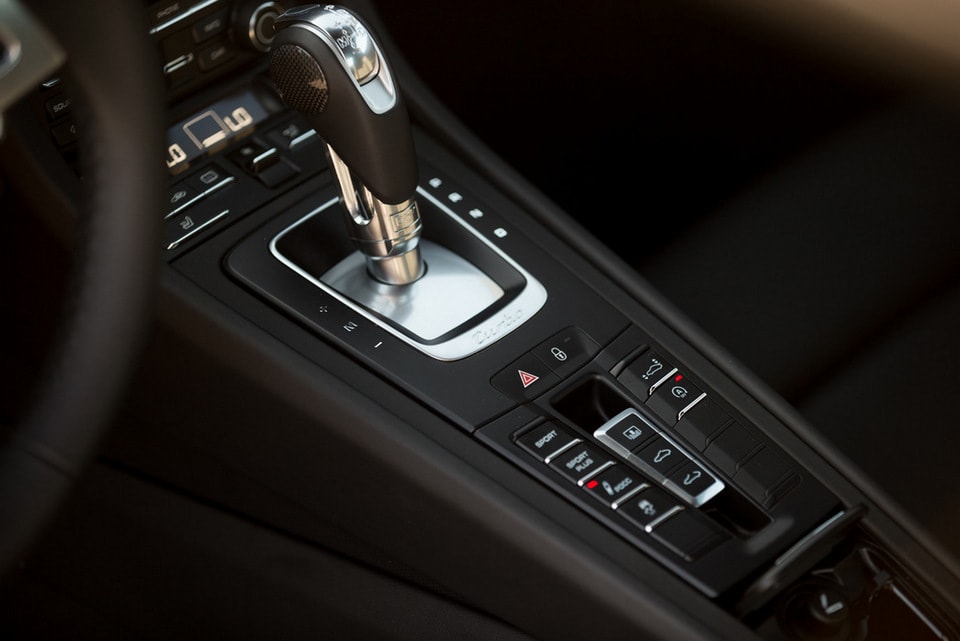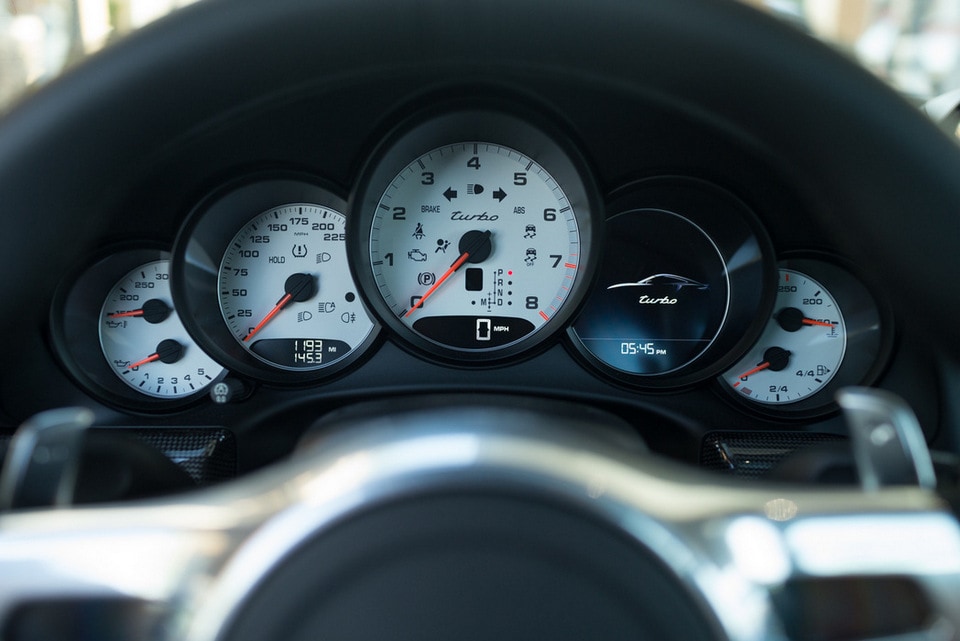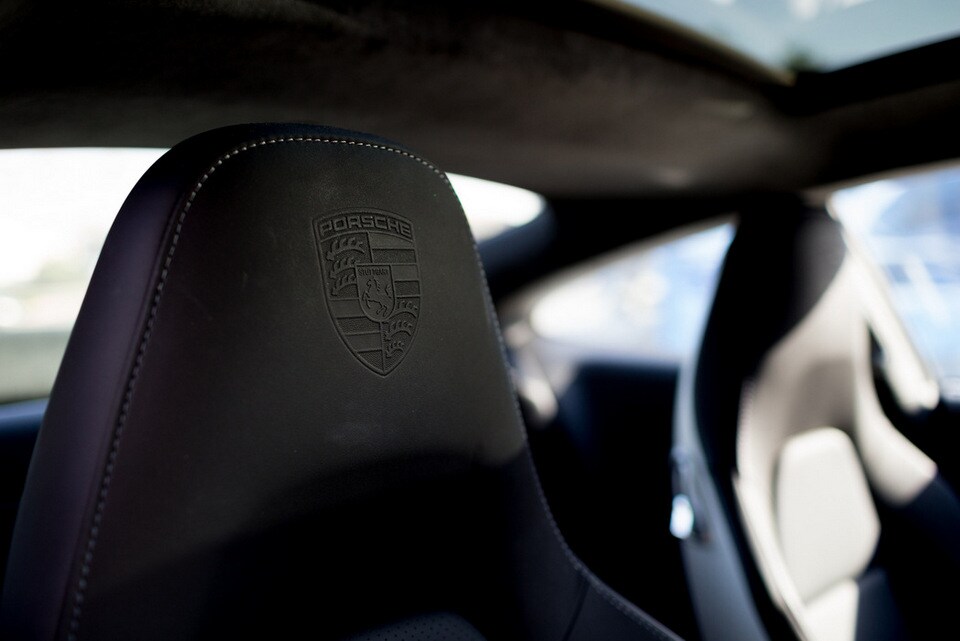First, a little background on the 911 and the Turbo. The 911 turned 50 last year, and despite the the somewhat unconventional rear-engine configuration, it has become perhaps the most famous sports car on the planet. The 911 was totally redesigned for the 2013 model year, so we knew that an all-new Turbo was not far behind.
The Turbo first joined the 911 lineup in 1975 and has graced the covers of countless magazines ever since. Although the basic concept has not changed much over the years-a turbo flat-six producing amazing, Autobahn-storming power-the car has steadily improved in order to keep other super cars at bay. The 2014 model promises more refinement and power than ever before. And although it might be hard to imagine how Porsche could improve on the last iteration, it has managed to do just that.
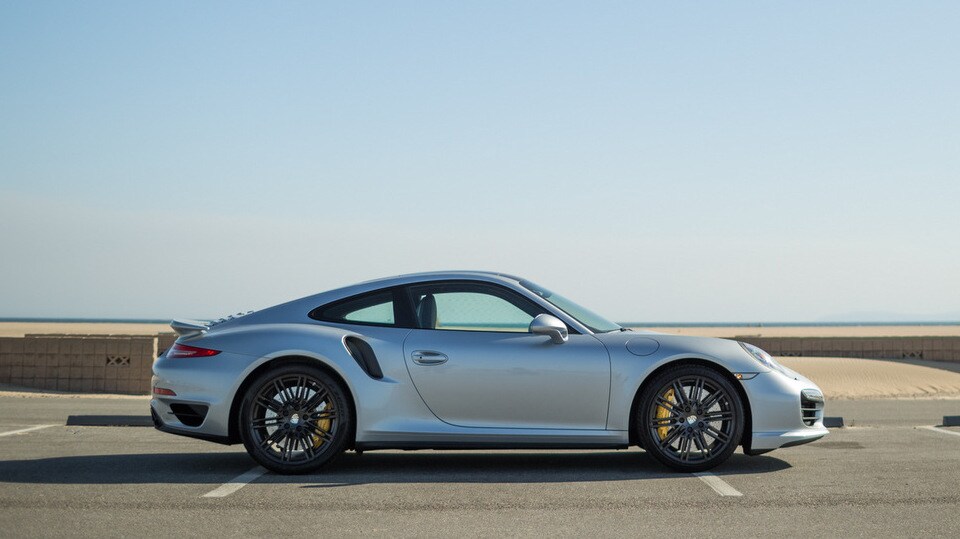
Exterior:
The basic 911 shape is iconic, and Porsche has done a truly remarkable job evolving it over time to play tribute to the heritage but also remain thoroughly modern, too. The 911 Turbo stands apart from its naturally aspirated cousins with a front fascia designed for better air induction (with a spoiler that employs air bladders to adjust height according to speed) and much bigger haunches (with large air intakes). And then of course there is that rear wing-the Turbo's famous signature. Overall the car is a bit wider and longer than the car it replaces, with a slightly longer wheelbase.
The standard 20" Turbo wheels are simply gorgeous to look at (though 20" five-spoke Sport Classic Wheels and 20" Turbo S Wheels are also available). Silver is the classic 911 color and we love it. Optional exterior equipment on our car include SportDesign side mirrors and full LED headlights.
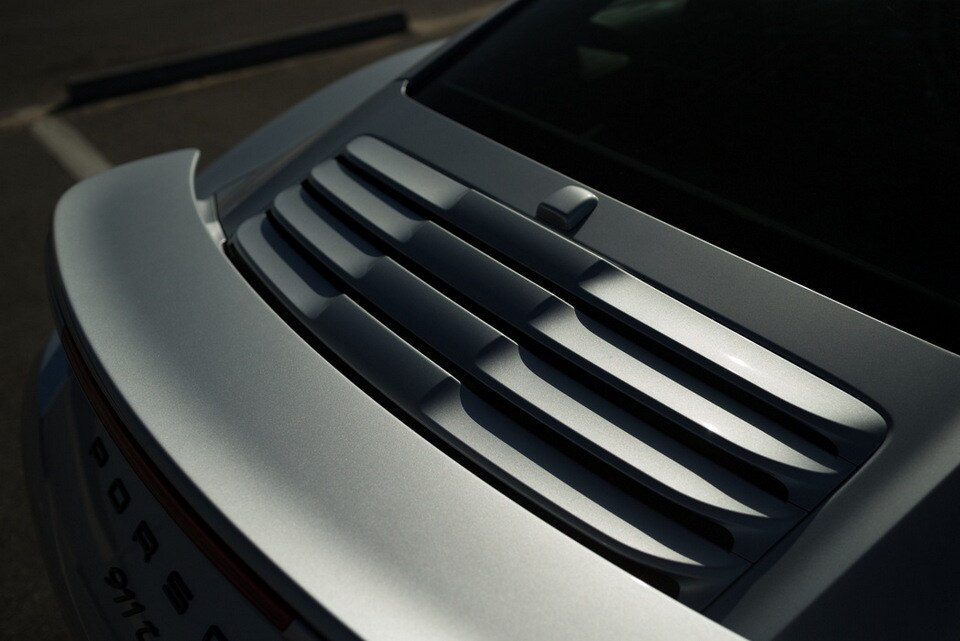
Interior:
The new Turbo interior is roomier and more luxurious than its predecessor. The large center console first seen in the Panamara a few years back has found a home in most modern Porsches. Fit and finish is, of course, first rate, and 911s have wonderful outward visibility. The optional 18-way adjustable Porsche Adaptive Sport Seats were snug yet comfortable.
Our car was equipped with a full black leather interior with heated front seats, the carbon interior package, the Sport Chrono package, a glass sunroof, white instrument dials and Porsche crests in the headrests. Rear seating is minimal, but it is there in a pinch (give a kid a ride in a Porsche 911 Turbo and they will be grateful forever). There is also room to stow a few items up front in the boot.
If you have looked closely at the photos (taken by super pro photog Larry Chen of Speedhunters fame), you may have noticed the PDK shifter. That is not an option. The PDK is standard on the Turbo now, and a manual is no longer available. But more on that in as we get to the topic everyone is waiting for: performance.
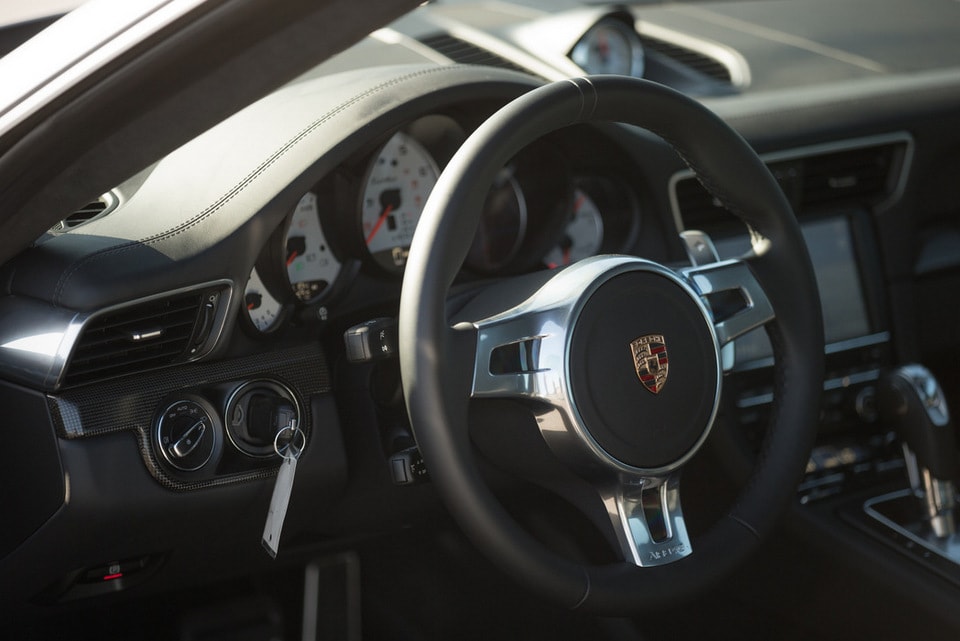
Performance:
The Porsche Turbo might look great, it might be super comfortable, but it is really all about one thing: mind blowing performance. The twin-turbo 3.8-liter flat-six direct-injection engine produces 520 horsepower at 6000 rpm and 487 lb-ft of torque. According to Porsche, the new Turbo can hustle from 0 to 60 in just 3.2 seconds and reach a top speed of 195 miles per hour. We believe it. Oh yes, we believe it. Do you want your eyeballs smashed to the back of their sockets? Drive this car.
But how about some of the technology behind all this brawn? After all, that power won't do you much good unless you can apply it. Remember how I mentioned that "unconventional rear-engine configuration"? Well, that design haunted earlier versions of the Turbo, which became famous for snap oversteer. This is not a problem with the new car, which employs a sophisticated all wheel drive system and rear wheel steering to keep things firmly in control at all times.
Let's get back to that PDK shifter. Yes, traditionalists may object, but if you want to make the most of all that power, the PDK is definitely the ticket. The shifting provided by this seven-speed twin-clutch transmission is lightning fast, precise and incredibly adaptive. It is no wonder that all modern day racing Porsches employ this system.
What else? The electronic steering feels properly weighted and very precise. The sound of the twin-turbo burbling through the exhaust positively melodious. Our test car was optioned with Porsche Dynamic Chassis Control (which keeps the car rock steady and flat in corners) and Porsche Ceramic Composite Brakes (which will stop the car on a dime while resisting fade on those hot track days).
Oh, and how about fuel economy? I'm glad you asked, because this super car is efficient, too. A stop-start system plus some ingenious programming in the PDK allow the Turbo to get a truly astounding estimated 17 mpg city and 24 mpg highway. Tell that to your Prius-owning neighbor.
Despite all this incredible power and handling capability, the Porsche 911 Turbo is perfectly suited for driving around town-the suspension is incredibly smooth and comfortable, and that front spoiler automatically retracts at low speed to avoid scrapes on speed bumps and driveways. How's that for a well-mannered super car?
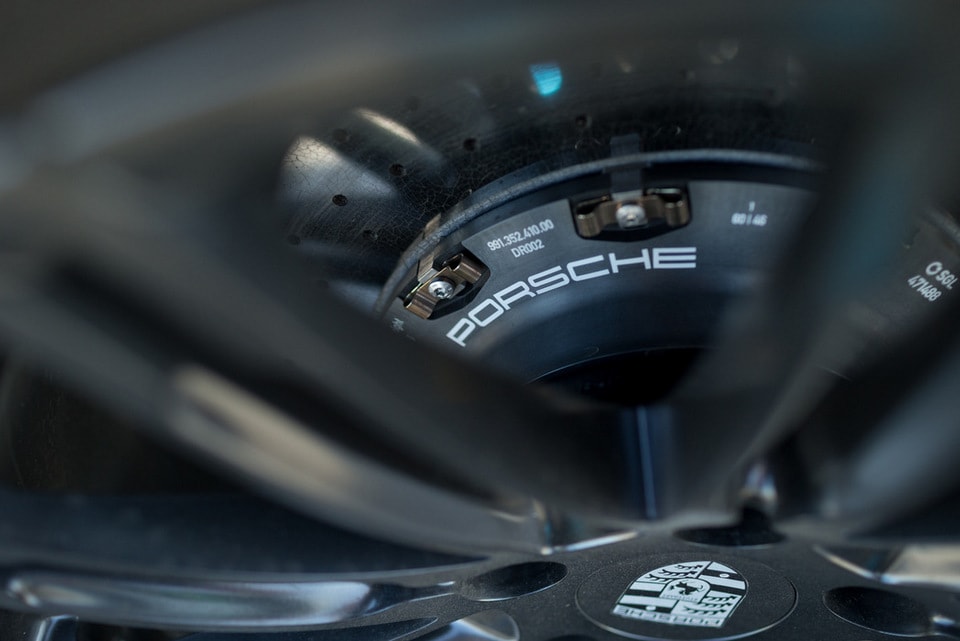
Overall:
Our car with the options mentioned above had a sticker price of $177,235. If you want to spend more, you can definitely spend more, as there are plenty more options in the Porsche catalog. And if you want to go faster, there is even the Turbo S model to consider (which gets you 560 horsepower and drops the 0 - 60 time to under 3 seconds). But we'd feel pretty happy with this Rhodium Silver Metallic Turbo, which is equally at home on the track or on a nice sunny day cruising around town.
Photos by Larry Chen and words by Rob Einaudi

